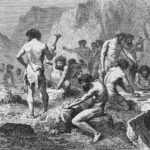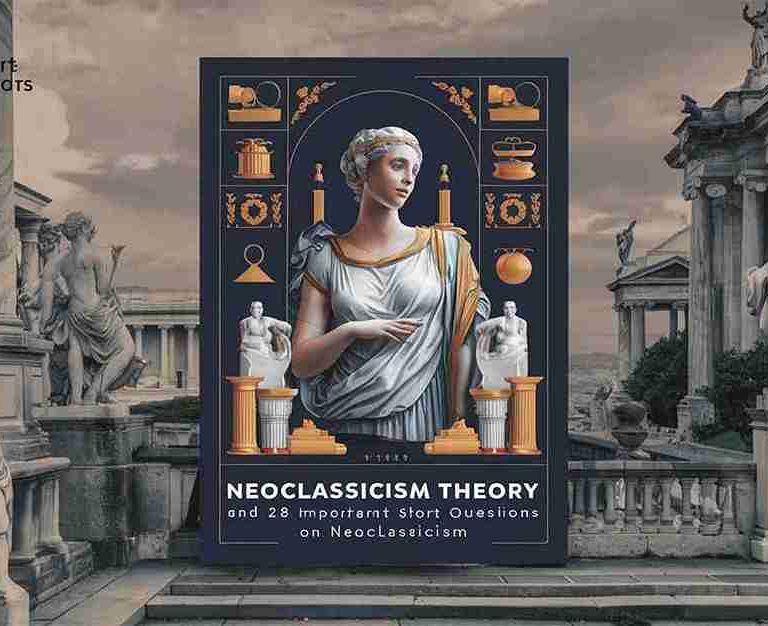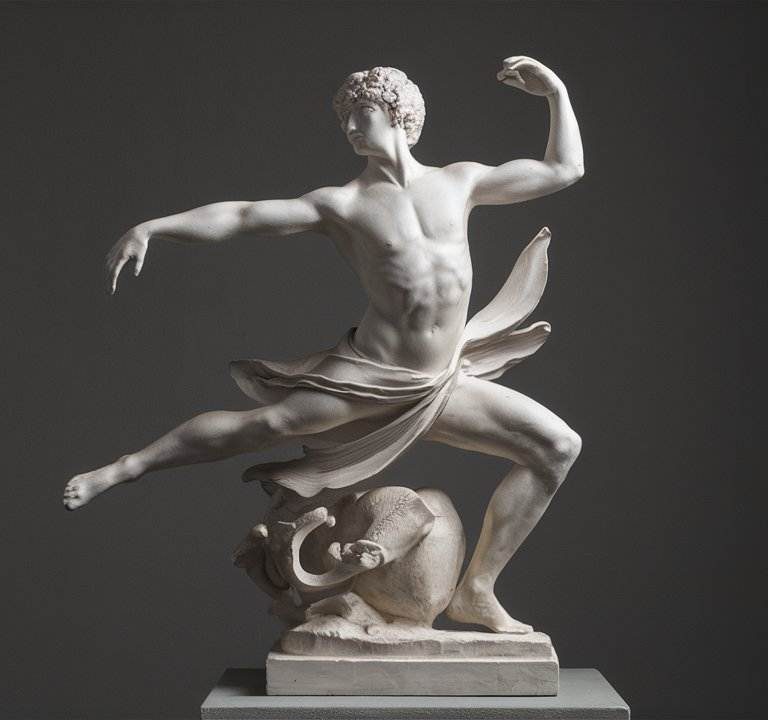
Sonnet No. 73
William Shakespeare: Sonnet No 73 Questions & their Answers

Table of Contents
(a) Essay Type Questions
Q.1. In the sonnet(Sonnet No 73) beginning ‘That time of year’ (i) What are the three metaphors Shakespeare provides for old age? (ii) What does he mean by ‘Death’s second self? (iii) How is the fire consumed with that which it was nourished by? (iv) How and why is the love felt to be more strong?
Ans. (i) In the sonnet(Sonnet No 73) beginning ‘That time of year’ Shakespeare provides three metaphors for old age-(1) bare ruined tree, (2) glimmering twilight turning into a black night and (3) dying embers. Shakespeare compares himself in his old age to an autumnal or wintry tree with a few yellow leaves or none hanging on the branches which stand out sharp and gaunt. The leafless boughs which shake against the cold and where birds lately sang are compared to bare ruined choirs. The poet too is like bare ruined choirs.Sonnet No 73
The poet compares himself to the glimmering twilight turning into a black night. The metaphor of twilight with darkness quickly devouring the carth beautifully evokes the poet’s decrepitude. The poet also provides the metaphor of the smouldering hearth where embers lie on top of ashes with the fuel all consumed. Likewise, the leaping flame of the poet’s youth has died down into a quiescent glow, which seems to lie on the ashes of his past and its vigour and which will ultimately fade out completely at the moment when the last trace of bodily vitality is exhausted.
(ii) ‘Death’s second self means sleep which, from classical times has commonly been referred to as ‘the elder brother of death’. When a man sleeps he is as unconscious of his surroundings as a dead man. Sleep closes up a man in repose; likewise death closes him up in repose which knows no break. Sonnet No 73
(iii) A flame lives on the volatization of the fuel (i.e. wood, coal, oil etc.) and when that substance is itself consumed there is nothing to cause the flame that consumes it. The poet’s love for his Friend, in its youth, has fuelled the fire of his life. When the poet will die, the poet’s love for the youth which nurtured his life will also be extinguished. (The poet’s love for the youth is the fuel; his life is the fire.)
(iv) Love is felt to be more strong because the perception of the approaching demise of the poet and his love causes the youth to love him and prize his love for himself faithfully and constantly. Love is felt to be more strong because it is not subject to the influence of devouring Time. It does not lose its vitality and vigour with the passing of time as one’s youth does.
Q.2. Explain the following phrases from Sonnet No 73: (i) ‘That time of year’, (ii) ‘Twilight of such day’, (iii) ‘Death’s second self and (iv) ‘The glowing of such fire’.
Ans. (i) ‘That time of year’ means late autumn or early winter. In early winte: or late autumn trees shed their leaves. A few yellow leaves or none are seen to hang on their boughs which shake in the cold. The trees look like the ruined remains of church choirs. Shakespeare uses the phrase, “that time of year” metaphorically. He compares himself in his old age to a leafless tree standing out sharp and gaunt and looking like a skeleton. The image of the leafless tree beautifully evokes the poet’s decrepitude. Sonnet No 73
(ii) The phrase ‘twilight of such day’ means the faint light that remains of the day after sunset. Shakespeare uses ‘twilight’ as a metaphor for decrepitude. Twilight means the end of day. With the twilight light fades away and darkness descends on earth. Likewise, with old age a man loses his vitality and vigour, and hears the footsteps of death approach him. As the twilight turns into a black night, so decrepitude turns into death.
(iii) ‘Death’s second self means sleep which, from classical times, has commonly been seferred to as ‘the elder brother of death’. When a man sleeps, he remains unconscious of his surroundings like a dead man. Sleep closes up a man in repose; likewise death closes up a man in repose which knows no break.
(iv) ‘The glowing of such fire’ is a suggestive phrase. It means the embers of a hearth glowing before the final extinction into dead ashes. Embers lie on top of ashes after the fire has consumed the fuel (wood, coal, oil etc.) and there is no more fuel to produce the flame. The poet has used the image of ‘the glowing of such fire to evoke his decrepitude. Sonnet No 73
The leaping flame of his youth has died down into a quiescent glow, which lies on the ashes of his past and its vigour as a person lies on death-bed and will soon die together with the poet’s love for his Friend, which, in its youth, has fuelled the fire of his life to flame so brightly.
Q.3. Explain the following from sonnet 73: (i) ‘Bare ruined choirs’, (ii) Why is night called ‘Death’s second self
historical, metaphorical). Pictorially it summons up the ruined remains of a church choir (ie, the chancel, that part of the church where the service was read and sung) in which only the branching, bough-like arches are left standing open to the elements. Meta phorically, it may refer to those leafless boughs which shake against the cold and which stand out sharp and gaunt in hoary winter. Historically it may be taken as a reference to the despoiling and destruction of the monasteries under Henry VIII. Sonnet No 73
Bare ruined choirs’ brings to the eye the roofless shells of monastic churches which met the eyer of anyone travelling round England in the later part of the sixteenth century.
(ii) Night is called death’s second self (i.e. death’s elder brother) from classical times, because night brings one rest after the day’s toil, just as death brings one eternal sleep after the life’s toil. Night is used metonymically here for sleep, because nigh symbolizes sleep. To refer to night (sleep) as death’s brother was a poetic convention of the time. Sidney calls sleep ‘the elder brother of death’ (The Old Arcadia).
That time of year thou mayst in me behold -William Shakespeare:Sonnet No. 73
join on facebook
Q.4. Analyse the sonnet(Sonnet No 73) “That time of year’ with reference to the following points: (i) Elizabethan sonnet conventions(ii) Concluding couplet.
Ans. (1) The sonnet(Sonnet No 73) ‘That time of year’ contains some Elizabethan sonnet conven tions. Shakespeare in this sonnet imagines himself as a decrepit person troubled by the thoughts of approaching death. He compares himself to a leafless (bare) ruined tree standing like a skeleton in hoary winter. Actually Shakespeare could not have been as old as he appears in this sonnet, when it was composed. To depict themselves as old men was a convention among the sonneteers of the Elizabethan period.
They often speak of their autumn-time of life. Robert Greene in his “Farewell to Folly”, 1591 says age is approaching and he is speaking of his many years at a time when he was not much past thirty. In Delia Daniel laments “My days are done” when he was only 29. Drayton, Shakespeare’s Warwickshire friend speaks in Idea’s Mirror of his withered brow all wrinkled with despairs. It was a common literary convention of the time to depict time as wreaking sweeping changes on all things that come to exist.
A man. however great cannot escape Time’s scythe. In Sonnet No 73 we see that a young man loses his youth with the passing of time, becomes a decrepit old man with vigour and vitality all gone, and waits for death to take him away after a while. It is due to the cyclic operation of time that morning turns into noon, noon into twilight and twilight into black night. The conception of sleep as the brother of death was also a conventional theme. Sidney calls sleep the elder brother of death.
(ii) The concluding couplet of Sonnet No 73 contains a counter-statement to what has been said in the quatrains. In each quatrain Shakespeare not only delineates an autumnal, twilight or glowing present but foreshadows a winter, night or coming extinction. In the couplet the decay wrought by Time on the poet’s life is counter-acted by the Friend’s love growing stronger with the latter’s perception of the approaching demise of the poet and his love for himself. This perception causes the youth’s love for the poet to grow stronger, and makes him love the poet and prize his love more constantly and faithfully.
Q.5. “Bare ruined choirs where late the sweet birds sang.” (L. 4) – Which features of the wintry landscape remind the poet of ‘Bare ruined choirs’ In Sonnet No 73?
Ans. (i) The desolate features of the wintry landscape remind Shakespeare of ‘Bare ruined choirs.
In winter trees have shed their leaves. A few green leaves or none hang upon the boughs that shake against the cold. The trees with leafless branches look like so many skeletons. They appear to be ruined remains of a church choir in which only the branching, bough-like arches are left standing open to the elements.
Q.6. Show how they are treated in Shakespeare’s Sonnet No 73 ‘That time of year’: old age
Ans. Old age is an unwelcome period of man’s life. It succeeds youth, the best period of his life. His vitality and vigour is gone. He hears the fearful foot-steps of approaching death. That is why the mood of old age is one of depression. In the sonnet “That time of year’ Shakespeare portrays himself as a decrepit man.
Q.7. How does Shakespeare make use of nature-imagery to describe the onslaughts of time on human life in Sonnet No 73 (‘That time of year’)?
Ans. Shakespeare’s sonnets are remarkable for the memorable treatment of injurious Time-Time that devot rs all things with the hard teeth of the years. To treat Tiine as an omnipresent and omniscient cosmic force was a sonneteering convention of the Elizabethan period, to be traced back to Horace and Ovid. It brings to decay, or subjects to revolutionary changes, all things that come into existence. Nothing can escape its scythe (onslaughts). It destroys or reduces into oblivion cities, kingdoms, marvels, youth, beauty etc. Man and nature go through series of changes and ultimately come to extinction owing to the operation of time. The injurious time has found a beautiful and the most famous expression in Shakespeare’s Troilus and Cressida:
“Time hath, my lord, a wallet at his back. Wherein he puts alms for oblivion,
A great-sized monster of ingratitudes.”
In Sonnet No 73 we see that a young man loses his youth with the march of Time and becomes old with vigour and vitality all gone, and waits for death to take him away after a while. Nature is also subject to its onslaughts. Trees put forth green leaves and shed yellow ones, morning changes to noon, noon to twilight, twilight to night in a cyclic order.
Shakespeare makes use of nature-imagery to describe decrepitude, the product of Time’s onslaughts on human life. To begin with, Shakespeare evokes his decrepitude through the image of autumnal or wintry trees with a few yellow leaves or none hanging on the branches which shake in the cold. The leafless branches look like ruined choirs where lately sweet birds sang. The poet uses the image of glimmering twilight to describe the onslaughts of time.
Twilight will soon turn into a black night as a result of Time’s operations. Likewise, with the triumphant march of Time the poet’s decrepitude will lead to death. The poet uses the image of black night to suggest death, the treasure-box in which Time hides everything. He also brings in the falconer image to suggest death. Just as a falconer sews up a hawk’s eyelids, so also death shuts up a man in eternal repose.
To conclude, Shakespeare uses the images of autumnal trees, twilight and falconry to show how Time rushes everything to decay and death.
Q.8. How far is Shakespeare’s Sonnet No 73 a poem on time, love and death which makes use of ambiguous imagery?
Ans. Shakespeare’s sonnets are remarkable for the treatment of time’s havoc. death’s inevitability, and triumph of love over both. Devouring Time is a salient and Ovidian theme which was treated by the Elizabethan sonneteers. Shakespeare often personifies Time in the sonnets, and portrays it as consuming all that comes into existence cities, kingdoms, monuments, youth, beauty, etc. with the hard teeth of the years.
It wreaks sea-changes on man and nature, decays them and brings them to dissolution, in course of ime. Death is the chest into which Time puts everything for oblivion. It is only over love that Time has no power: “Love’s not Time’s fool.” Shakespeare gives love a value above the death and deczy wrought by Time.
Sonnet No 73 is truly a poem on the themes of time, love and death, and Shakespeare makes use of ambiguous imagery to express them. He uses a series of images drawn from nature and house-hold matters to describe his decrepitude, effect of Time’s enslaught on him. Time has devoured his youth and has left him a decrepit old man. He is like an autumnal or wintry tree with a few yellow leaves or none hanging on the branches which shake in the cold. The poet uses the image of glimmering twilight to bring home the onslaughts of Time. Twilight will soon turn into a black night.
Likewise, with the triumphant march of Time the poet’s decrepitude will lead to death. The poet uses the image of black night to suggest death. He also brings in the falconer image to suggest death. Just as a falconer sews up a hawk’s eye-lids, so also death will close the poet up in eternal repose. The image of embers in a dying hearth finely brings out the onslaughts of Time on a man’s life. The leaping flame of youth has died down into a quiescent glow which seems to lie on the ashes of his past and its vigour and which will ultimately fade out completely at the moment when the last trace of bodily vitality is exhausted.
In Sonnet No 73, as in others, Shakespeare gives love a value in the end above the decay or destruction caused by Time. The sonnet hinges on a note of despair. The poet’s life is fast falling into decay with his youth devoured by Time and he will soon die. But the poet’s decrepitude and his fast approaching death do not affect the friend’s love for him. Rather the perception of the mortality and mutability of life causes his love to grow stronger. The youth’s love is here given a value in the end above the decay wrought by Time on the poet and the consequent despair that assails him. The couplet asserts this superiority of love:
“This thou perceiv’st, which makes thy love more strong,
To love that well, which thou must leave ere long.”
Q.9. “Sonnet 18 offers a direct contrast to Sonnet No 73 in theme and structure.”-Do you agree with this view? Give reasons for your answer.
Ans. Sonnet 18 is the poet’s tribute to his young and beautiful friend who is the perfect embodiment of the Platonic conception of the archetypal beauty. His beauty like the Platonic, is above the change wrought by all-devouring Time on earthly things. It does not decline by “chance, or nature’s changing course.” It remains untouched by death’s icy hånd. And this miracle is accomplished by the poet’s verses written to commemorate this beauty. Sonnet 18 sounds the theme of immortality assured through poetry. The anticipation of immortality for his verses and so immortality for his friend lend the sonnet an optimistic hue.
Sonnet 18 illustrates the poet’s high idealism of love. The young man’s love is the most precious thing in the poet’s life, and he wills to eternize the object of love in his verse. This sonnet is almost free from pessimism, and melancholy has nothing to do with it.
Sonnet No 73 is part of the sequence of sonnets 71-74 which express Shakespeare’s preoccupation with the thoughts of death at this period of life. Sonnet No 73 is charged with melancholy which is generated by the poet’s reflection on the mortality and mutability of human life. The poet is a decrepit person tossed by the storms of life, and troubled by the thought that death will soon swoop on him, and take him to the realm of eternal sleep.
The mood of depression informs the whole poem, and lends it a poignant note. It is to a bare ruined tree standing as a skeleton in hoary winter or the glimmering twilight turning into a black night that the poet compares himself in his old age. Embers of his youth’s fire, self-consumed, still linger, glowing before the final extinction.
Structure: Sonnet 18 is decisively Petrarchan notwithstanding Shakespearean
thyme-scheme. “To begin with, it is rhetorically divided into octave and sestet, the change between the two parts balanced on the fulcrum of the word “But” at the beginning of the ninth line.” (G. B. Evans) The octave (the first and second quatrains) stresses the mutability and fragility of beauty. But there is a dramatic shift, a change of tone or point of view in the sestet (lines 9-14). The sestet affirms the changelessruss or deathlessness of beauty as wrought by ‘eternal lines’. Sonnet 18 is magnificent throughout from the perfect beauty of the opening quatrain to the sweep and rush of the triumphant final couplet.
Sonnet No 73 cannot be resolved into an octave-sestet division. Here in each quatrain Shakespeare not only delineates an autumnal twilight or glowing present, but foresha dows a winter, night or coming extinction. The couplet contains a counter-statement to what has gone before. The quatrains are accumulative rather than repetitive. It is in the couplet that Shakespeare introduces a change of direction. So the sonnets and 73 are different from each other in theme and structure.
Q.10. Comment on the note of melancholy in Shakespeare’s Sonnet No 73.
Ans. Melancholy is the predominant note of the Shakespearean sonnets. This
melancholy note is the product of the poet’s reflection that human life is all too transient. that “everything that grows/Holds in perfection but a little moment/That this huge stage presenteth naught but shows” (sonnet 15, 11. 1-3), and that Time devours all things on earth-costly human artefacts and mighty objects of nature with the hard teeth of the years, little by little, in slow death.
The realization that beauty and youth we are proud of have too short a duration depresses us and makes us despair of our earthly existence The melancholy strain thus proceeds directly from the transience-theme. It has much to do with the sonnet’s continuous appeal down the centuries, because “Our sweetest songs are those that tell of saddest thought.”
Sonnet No 73 is one of the greatest and most typical of the Shakespearean sonnets. It is part of the sequence of sonnets 71-74 which expresses Shakespeare’s pre occupation with the thoughts of death at this period of life. Sonnet No 73 is charged with melancholy which is generated by the poet’s reflection on the mortality and mutability of human life. The poet is a decrepit person tossed by the storms of life, and troubled by the thought that death will soon swoop on him and take him to the region of eternal sleep.
The mood of depression informs the whole poem, and lends it a poignant nole It is to a bare ruined tree standing as a skeleton in hoary winter or the glimmering twilight turning into a black night that the poet compares himself in his old age. Embers of his youth’s fire, self-consumed, still linger, glowing before the final extinction.
This melancholy mood is self-generated; actually Shakespeare could not have been as old as he appears in this sonnet, when the sonnet was composed. To depict themselves as old men was a convention among the sonneteers of the Elizabethan period. They often speak of their autumn-time of life. Robert Greene in his Farewe to Folly (1591) says age is approaching and he is speaking of his many years at a time when he was not much past thirty.
In Delia Daniel laments “My days are done” when he was only 29. Drayton, Shakespeare’s Warwickshire friend, speaks in Idea’s Mirror of his “Withered brow all wrinkled with despairs” at 31. Though a mere conventional literary exercise, the portrait of himself as a decrepit person remembering sadly the happy days that are no more, that Shakespeare has drawn here is very convincing. If we consider the unreality of the sentiments expressed in this sonnet, we can only admire the dramatic projection of his self to a future state of life.
(b) Short Answer Type Questions
Q.1. In Sonnet No 73 “That time of year thou mayst in me behold, – When yellow leaves, or none, or few do hang.” (II. 1-2)-What do you understand by ‘That time of year’? What is its metaphorical explanation? Explain the metaphor in ‘yellow leaves.’ In Sonnet No 73.
Ans. ‘That time of year’ refers to late autumn or early winter. In late autumn trees are partly stripped of leaves. The leaves that still hang on the boughs are all yellow. In late winter trees are all leafless (bare).
“That time of year’ is a metaphor for decrepitude.
“Yellow leaves’ is a poetic metaphor for old age. It was a favourite image with the Elizabethan sonneteers
Q. 2. Explain the pictorial, historical and metaphorical meaning of “Bare ruined choirs.” (1. 4) in Sonnet No 73.
or
Explain the expression: “Bare ruined choirs where late the sweet birds sang.”
(L. 4) in Sonnet No 73.
Ans. Pictorially the expression ‘Bare ruined choirs’ summons up the ruined remains of a church choir (i.e. the chancel, that part of the church where the service was read and sung) in which only the branching, bough-like arches are left standing open to the elements.
Historically it alludes to the despoiling and destruction of the monasteries under Henry VIII. ‘Bare ruined choirs brings to the eye the roofless shells of monastic churches which were a common sight to anyone travelling round England in the later part of the sixteenth century.
Metaphorically it refers to the leafless boughs which shake against the cold.
Q.3. “In me thou seest the twilight of such day.” (L. 5)-Who are referred to by ‘me’ and ‘thou’? Explain the metaphor in ‘the twilight of such day.’Sonnet No 73
Ans. The speaker (or the poet) of the sonnets is referred to by ‘me’ and the friend of the speaker to whom the sonnets 1-126 are written by ‘thou”. “The twilight of such day’ is a metaphor (image) for decrepitude. At twilight the sun sinks below the western horizon, and faint light remains of the day. Darkness descends on earth and soon covers it. The poet too is in the twilight of his life. The light of life is fading away and will soon be devoured by black night.
Q.4. Explain the image (metaphor) in ‘the glowing of such fire.” In Sonnet No 73.
Ans. “The glowing of such fire’ is a suggestive and poetic metaphor for old age Decrepitude is like the smouldering hearth where embers lie on top of the ashes (of the poet’s youth). The leaping flame of the poet’s youth has died down into a quiescent glow which will ultimately fade out completely at the moment when the last trace of bodily vitality is exhausted.
Q.5. What do you understand by ‘Death’s second self’ in Sonnet No 73.
Ans. ‘Death’s second self means the sleep of death. Sleep, rather than night, is commonly called ‘the elder brother of death. Shakespeare here identifies death and sleep.
Q.6. “Death’s second self that seals up all in rest.” (1. 8)-What is death’s second self? Is the description appropriate?– Sonnet No 73.
Ans. Sleep is death’s second self.
The description of sleep as death’s second self (i.e. the brother of death) is appropriate, because death shuts up all that comes into existence in eternal sleep (rest), There is in ‘seals up ail in rest’, a metaphor derived from falconry. Just as a falconer sews up the eyes of a falcon to control its flight, so also sleep closes everything up in eternal rest.
The word ‘rest’ hints at death as an end which is as much desired as feared.
Q.7. Explain the image (metaphor) in ‘the glowing of such fire.” In Sonnet No 73.
Ans. “The glowing of such fire is a suggestive and poetic image (metaphor) for old age. Decrepitude is like the smouldering hearth where embers lie on top of the ashes (of the poet’s youth). The leaping flame of the poet’s youth has died down into a quiescent glow which will ultimately fade out completely at the moment when the last trace of bodily vitality is exhausted.
Q.8. What is the implication of the line: “Consumed with that which it was nourished by.” (1. 12) In Sonnet No 73.
Ans. A flame lives on fuel (wood, coal, oil, gas etc.), and when the fuel is consumed by the flame, there is nothing to keep up the flame. Shakespeare’s youth and vigour are fed by his love for the friend, and when the poet’s love is eaten up, there is nothing to fuel the fire of his life to flame so brightly. Thus both fire and fuel die simultaneously.
Q.9. “……which makes thy love more strong.” (l. 13)-How and why is the love felt to be more strong?Sonnet No 73
Ans. Love is felt to be more strong in that the perception of the approaching demise of the poet and his love causes the youth to love him and prize his love for himself faithfully and constantly.
Love is also felt to be more strong because it is not subject to the influence of the devouring Time. It does not lose its vitality and vigour with the passing of time as one’s youth does.Sonnet No 73
Q.10. In which stage of life is the poet’s persona supposed to be in Shakespeare’s Sonnet No 73
Ans. The poet’s persona is supposed to be, in Shakespeare’s Sonnet No 73, in the last stage of life which ends in death.
Q.11. What do ‘yellow leaves’ in Shakespeare’s Sonnet No 73 suggest?
Ans. ‘Yellow leaves’ in Shakespeare’s Sonnet No 73 suggests old age.
Yellow leaves recalls Macbeth’s famous speech in IV. III. 22-23:
“…….my way of life
Is fallen into the sear, the yellow leaf.”
Q.12. In Sonnet No 73 What is ‘Death’s second self and what can it do?
Ans. Sleep is ‘Death’s second self.’
It ‘seals up all in rest’ (that is, it closes everything up in eternal sicep).
Q.13. Describe an image of autumn in Shakespeare’s Sonnet No 73.
Ans. In autumn trees with a few yellow leaves or none at all hanging on the branches shake in the cold, like ruined remains of a church choir where lately sweet birds sang.
About the Author
Sisir Mondal
Administrator
My name is SISIR MONDAL, I complete my graduate from University of Kalyani , West Bengal, India . I am like to build WordPress website and also developing this type of website . If you want your website , you can contact me trough email. thanks to visit this site.














